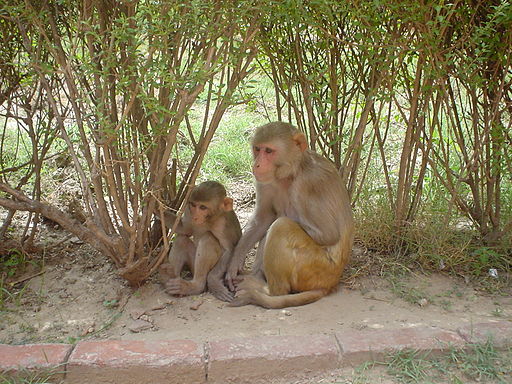Accessible Research: Rhesus Sperm Stem Cell Transplants
I was going to update a previous post about sperm stem cell transplants in boars, when I came across a very recent paper with a similar technique in the Rhesus monkey, and I couldn’t pass it up. So a little of the background content here is duplicated from that previous post.
Sperm cells are the vesicles used by male mammals to pass on their DNA to their offspring

Sperm are made from sperm stem cells. Each healthy cell in our body has a finite life, so we need stem cells (adult stem cells) to make more cells when the old one dies. There are
many kinds of adult stem cells that can only make more of a certain kind
of tissue. For example, there are skin stem cells to make more skin cells, there are
blood stem cells to make more blood cells, and there are sperm stem cells to make
more sperm cells. For the paper I’m talking about today by, it is the sperm stem
cells that are important.
Hermann et al. worked with male rhesus monkeys that had undergone chemotherapy, which can permanently damage fertility.

They took healthy
sperm stem cells from donor monkeys, and implanted them into the testes of chemotherapy-treated recipient monkeys. It is important that they transplanted sperm stem cells, which will keep replicating and making new sperm throughout the recipient monkey’s life, versus just sperm cells, which will die and not continue to replicate. This transplant wasn’t 100% successful, but in over half of the cases, there was evidence that the donor sperm stem cells were, in fact, replicating and producing sperm. Further, the researchers were able to confirm that donor-derived sperm could fertilize an egg (although, curiously, of the sample of sperm from the chemotherapy-treated monkey, only about 9% of the fertilized eggs were genetically similar to the donor, suggesting that not all spermatogenic function was lost during the chemotherapy treatment).
In the boar study, the scientists were looking to add functional sperm, where none (or very, very few) had previously existed, meaning that nearly all of the sperm generated would be from the donor. This would mean that if applied to genetically infertile XY-individual, that person’s offspring would be more genetically similar to the donor, than to the transplant recipient.
However, this study allows for a different approach, and application in humans. Considering the case when a sperm-making individual knows that they will be undergoing a procedure (such as chemotherapy) that affects their ability to make functional sperm. That person could, in theory, have some of their own sperm stem cells extracted, then transplanted back after the fertility-affecting procedure was completed.
Wow.
Cell Stem Cell. 2012 Nov 2;11(5):715-26. doi: 10.1016/j.stem.2012.07.017.
# Spermatogonial stem cell transplantation into rhesus testes regenerates spermatogenesis producing functional sperm.
Hermann BP, Sukhwani M, Winkler F, Pascarella JN, Peters KA, Sheng Y, Valli H, Rodriguez M, Ezzelarab M, Dargo G, Peterson K, Masterson K, Ramsey C, Ward T, Lienesch M, Volk A, Cooper DK, Thomson AW, Kiss JE, Penedo MC, Schatten GP, Mitalipov S, Orwig KE.
